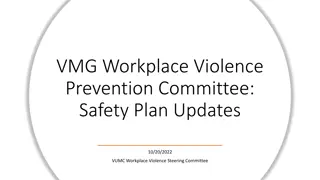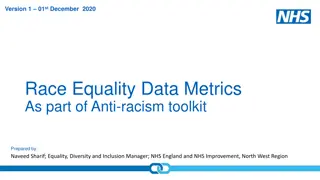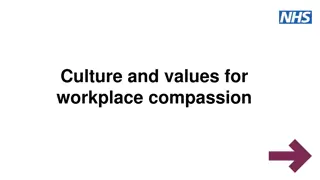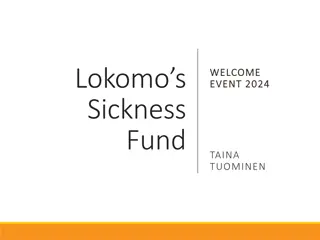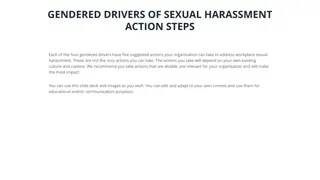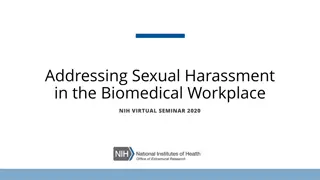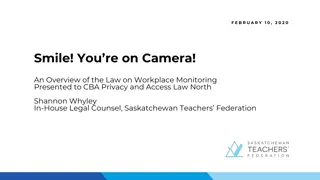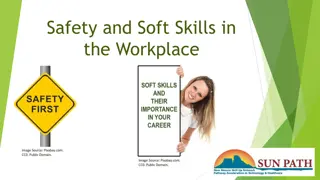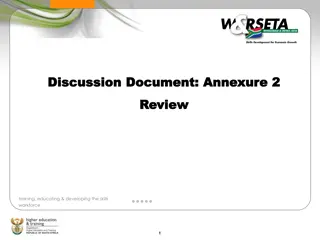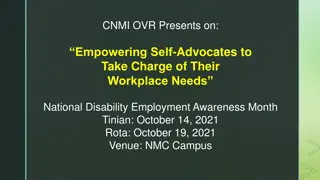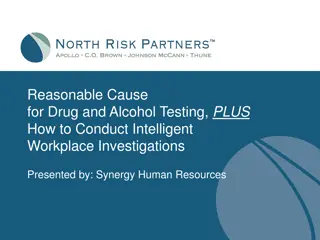Understanding Generational Differences in the Workplace
Exploring generational gaps in the workforce, this presentation delves into the characteristics of Generation Z, Millennials, Generation X, and Baby Boomers. It highlights the impending retirement of a significant portion of the facilities management sector and emphasizes the importance of multi-generational understanding for a harmonious and successful work environment.
- Generational Differences
- Workplace Dynamics
- Employee Engagement
- Multi-Generational Culture
- Succession Planning
Download Presentation

Please find below an Image/Link to download the presentation.
The content on the website is provided AS IS for your information and personal use only. It may not be sold, licensed, or shared on other websites without obtaining consent from the author. Download presentation by click this link. If you encounter any issues during the download, it is possible that the publisher has removed the file from their server.
E N D
Presentation Transcript
Working As One: Bridging and Minding Generational Gaps TAHFM Presented By Amelie Karam April 2, 2019
In the next five to 15 years, 50% of the current facilities management workforce could retire. *IFMA Foundation
The Generations Defined Generation Z Born: 1997 and later Age in 2019: up to 22 Millennial Generation Born: 1981-1996 Age in 2019: 23-38 Generation X Born: 1965-1980 Age in 2019: 39-54 Baby Boomers Born: 1946-1964 Age in 2019: 55-73 Greatest Generation Born before 1928 Age in 2019: 92+ Silent Generation Born: 1928-1945 Age in 2019: 74-91 *Pew Research 2018
The Facility Management Workforce Millennials and Generation Z 15% Baby Boomers 45% Generation X 40% *InternationalFacilityManagementAssociation
Multi-generational understanding Multi-generational culture Employee engagement Employee loyalty Recruiting top talent One unified organization
Generation Z Generation Z
Generation Zs Strengths Tech savvy Strategic Entrepreneurial Thrifty *Center of Generational Kinetics 2017 & 2018 *Bentley University 2017
Generation Zs Weaknesses Communicates almost entirely on screens Less idealistic Less guarded with privacy *Center of Generational Kinetics 2017 & 2018
Millennials Millennials
Millennials Strengths Tech Dependent Social Media Machines Enthusiastic Inclusive Self-Sufficient
Millennials Weaknesses Entitled No Sense of Commitment Not Hard Workers Know-It-All Attitude
Generation X Generation X
GenerationXs Strengths Effective Managers High Revenue Generators Adaptable Problem Solvers Collaborators
Generation Xs Weaknesses Lack Executive Presence Not Cost Effective Overlook Big-Picture Don t Always Speak Their Mind
Baby Boomers Baby Boomers
Baby Boomers Strengths Productive Hardworking Team Players Mentors
Baby Boomers Weaknesses Not Open to Collaboration Less Inclined to Accept Change Not Tech Savvy
Generational Differences Only 27% of Millennials are married; whereas 65% of Baby Boomers were married at the same ages. *Gallup 2018 Four-in-ten Millennial workers ages 25 to 29 had at least a bachelor s degree in 2016. *Pew Research 2017 The U.S. divorce rate has dropped 18% from 2008 to 2016. *University of Maryland As of 2016, 15% of Millennials were living in their parents home. *Pew Research 2016 Average student loan debt for Millennial undergraduate is $39,400. *StudentLoanHero 2018 Gen Z is the already the most racially and ethnically diverse generation, as only 52% are non-Hispanic whites. *Pew Research 2018
Millennials vary by culture. *Harvard Business Review Study 2015
What Every Generation Wants: Flexible hours Meaningful work Relaxed and efficient workplace Good benefits and perks Room for growth
Why Organizations Cause Millennials to Job Search Lack of diversity 1% Poor work-life balance 6% Lack of organizational support/mentoring 20% Lack of compensation and/or benefits 6% Incompatible management style 18% Poor environment and culture 40% *Witt/Kieffer 2017
Create a culture that is: Well-defined What words will guests use to describe your organization? Properly executed Are employees successfully living out culture at work? Makes an impact How is the culture helping the community? Gives work meaning and purpose Do employees know their role in making the culture thrive?
Employee engagement Employee engagement
Engagement factors: Meaning Employees want to know the why behind their work. Autonomy Employees want to have freedom to succeed and learn on their own. Growth Employees want to see where their career today is leading them tomorrow. Impact Employees want to see the impact they are making through their work. Connection Employees want to feel like they are a vital part of their work community. *DecisionWise 2018
Employee loyalty Employee loyalty
Building employee loyalty Create a strong culture Build relationships Affirm fellow employees Collaborate when decision making *NRC Health 2018
One unified organization One unified organization
Use Gen Zs connectivity audience. connectivity to access a broader Use Millennials inclusiveness diverse perspective. inclusiveness to create more Use Gen X s adaptability do things. adaptability to discover new ways to Use Baby Boomer s experience the younger employees. experience to help mentor
Takeaway #1 To attract and retain top talent you must be open to change.
Takeaway #2 Build a community within the workplace that is supported by individual relationships.
Takeaway #3 Be aware of generational needs in the workplace to help them feel satisfied and engaged with their job.
Takeaway #4 Check in often with your Generation Zers, Millennials, Generation Xers, and Baby Boomers will help them feel motivated.
Takeaway #5 All generations in the workplace have more similarities than they do differences.


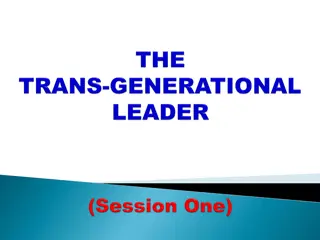

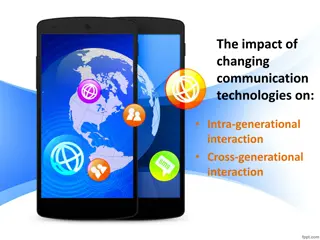

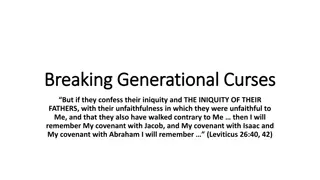

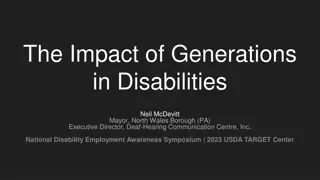
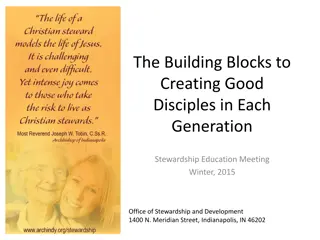


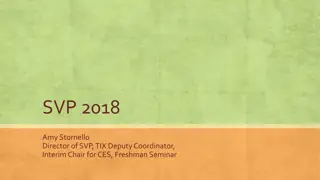
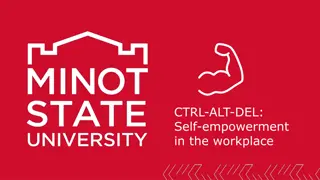
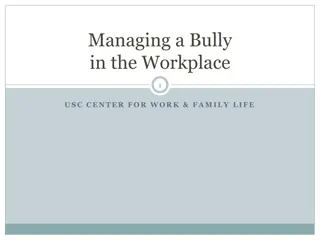

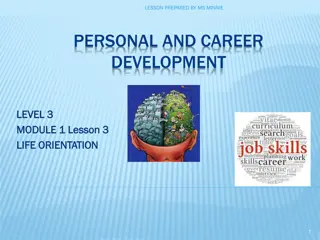

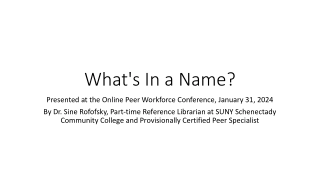
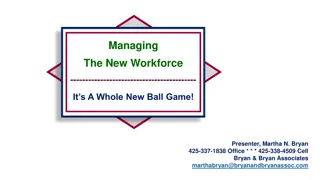
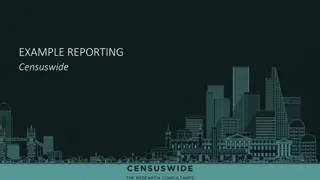
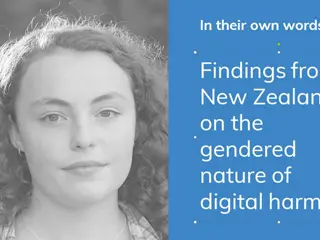
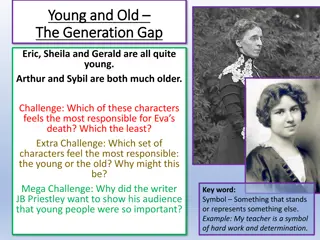
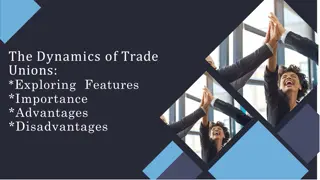
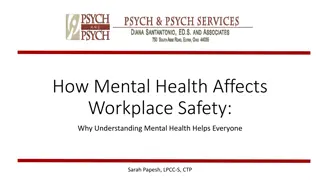
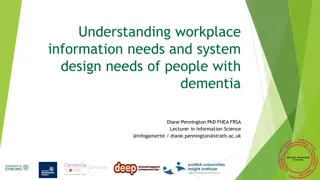
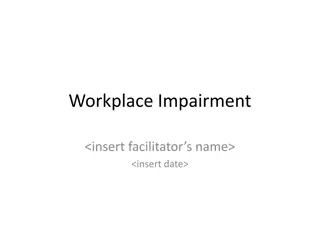

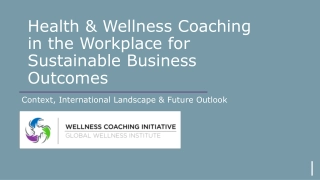






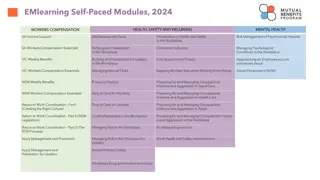

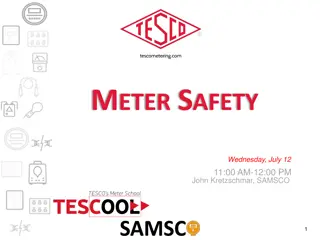
![Workplace Violence Prevention Plan in [District]: Definitions, Elements, and Implementation](/thumb/117038/workplace-violence-prevention-plan-in-district-definitions-elements-and-implementation.jpg)
